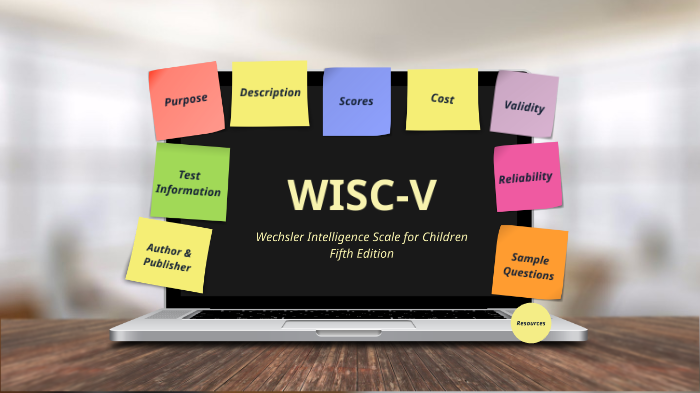Assessment for Learning MOOC’s Updates
The Wechsler Intelligence Scale for Children (WISC)
For analysing one example of IQ test, my pick is, The Wechsler Intelligence Scale for Children (WISC) that is an individually administered intelligence test for children between the ages of 6 and 16. The Wechsler Intelligence Scale for Children (WISC) has been around since 1949 and
has undergone several updates and the current version of the test, The Fifth Edition (WISC-V; Wechsler, 2014) is the most recent version.
Though this test can be used as an IQ test for children, it is most often used as a clinical tool to measure individual cognitive abilities. The WISC is often used among a battery of other tests to assess and identify cognitive function and ability ranges which can help identify giftedness, learning disabilities, or general strengths and weaknesses a child may have in their cognitive abilities. It also provides five primary index scores, namely Verbal Comprehension Index, Visual Spatial Index, Fluid Reasoning Index, Working Memory Index, and Processing Speed Index. These indices represent a child's abilities in discrete cognitive domains. These Five complementary subtests yield three complementary composite scores to measure related cognitive abilities. Two subtests must be administered to obtain each of the primary index scores. The Full Scale IQ is derived from 7 of the 10 primary subtests: Both Verbal Comprehension subtests, one Visual Spatial subtest, two Fluid Reasoning subtests, one Working Memory subtest, and one Processing Speed subtest. On one hand, as an assessment tool, The WISC can be used to show discrepancies between a child's intelligence and his/her performance at school and can be used to understand the complexities of the human mind by examining each subtest and can, indeed, help in diagnosing learning disabilities. On the other hand, the research does not show this to be an effective way to diagnose ADHD or learning disabilities. The vast majority of children with ADHD do not display certain subtests substantially below others, and many children who display such patterns do not have ADHD. As an assessment tool for diagnosing children, best practice suggests that a multi-test battery, i.e., multi-factored evaluation, should be used as learning problems, attention, and emotional difficulties can have similar symptoms, co-occur, or reciprocally influence each other.
Links:
Wechsler Intelligence Scale for Children (WISC) | IQ Test Prep https://iqtestprep.com/wechsler-intelligence-scale-for-children/
Wechsler Intelligence Scale for Children - Wikipedia https://en.m.wikipedia.org/wiki/Wechsler_Intelligence_Scale_for_Children


